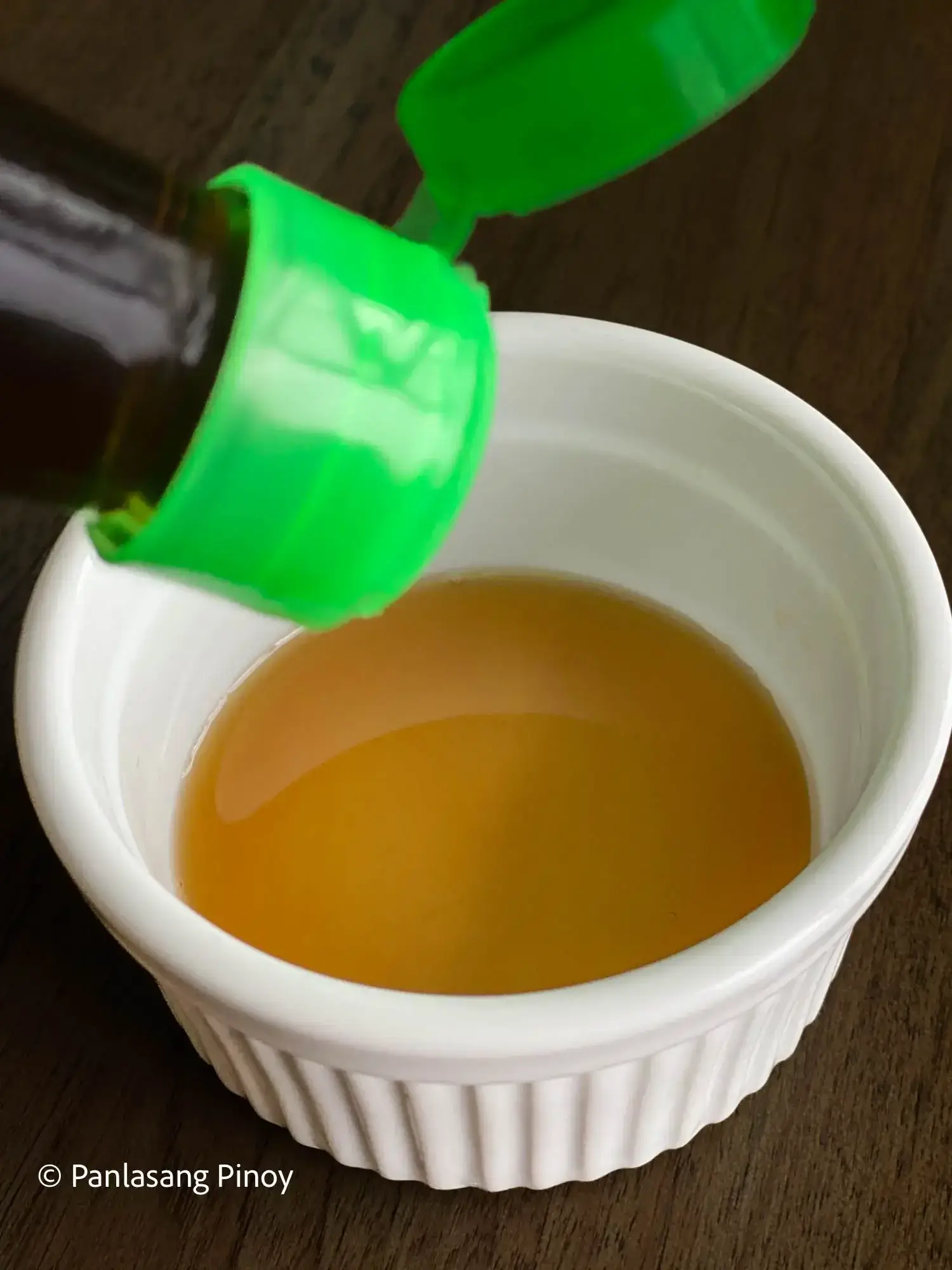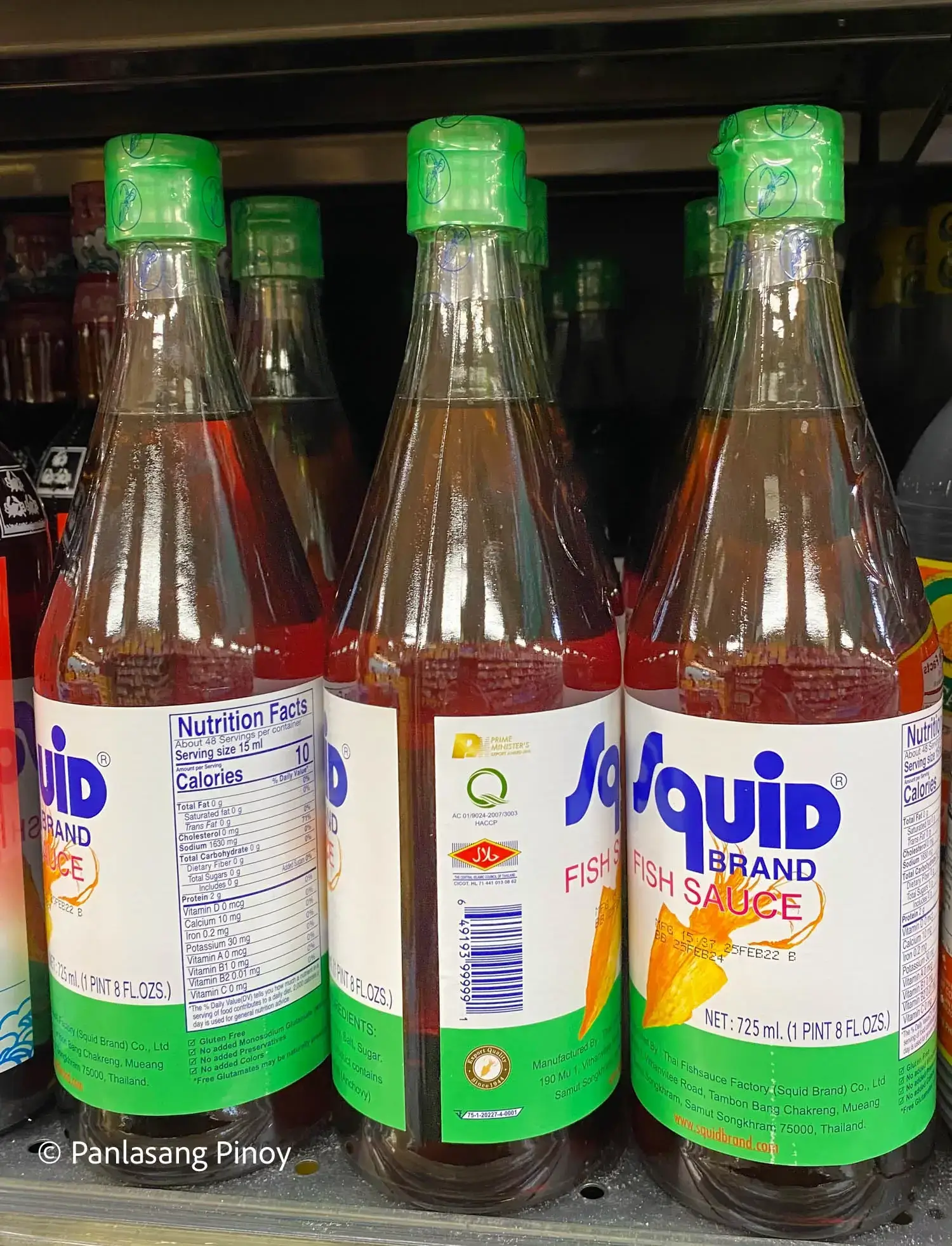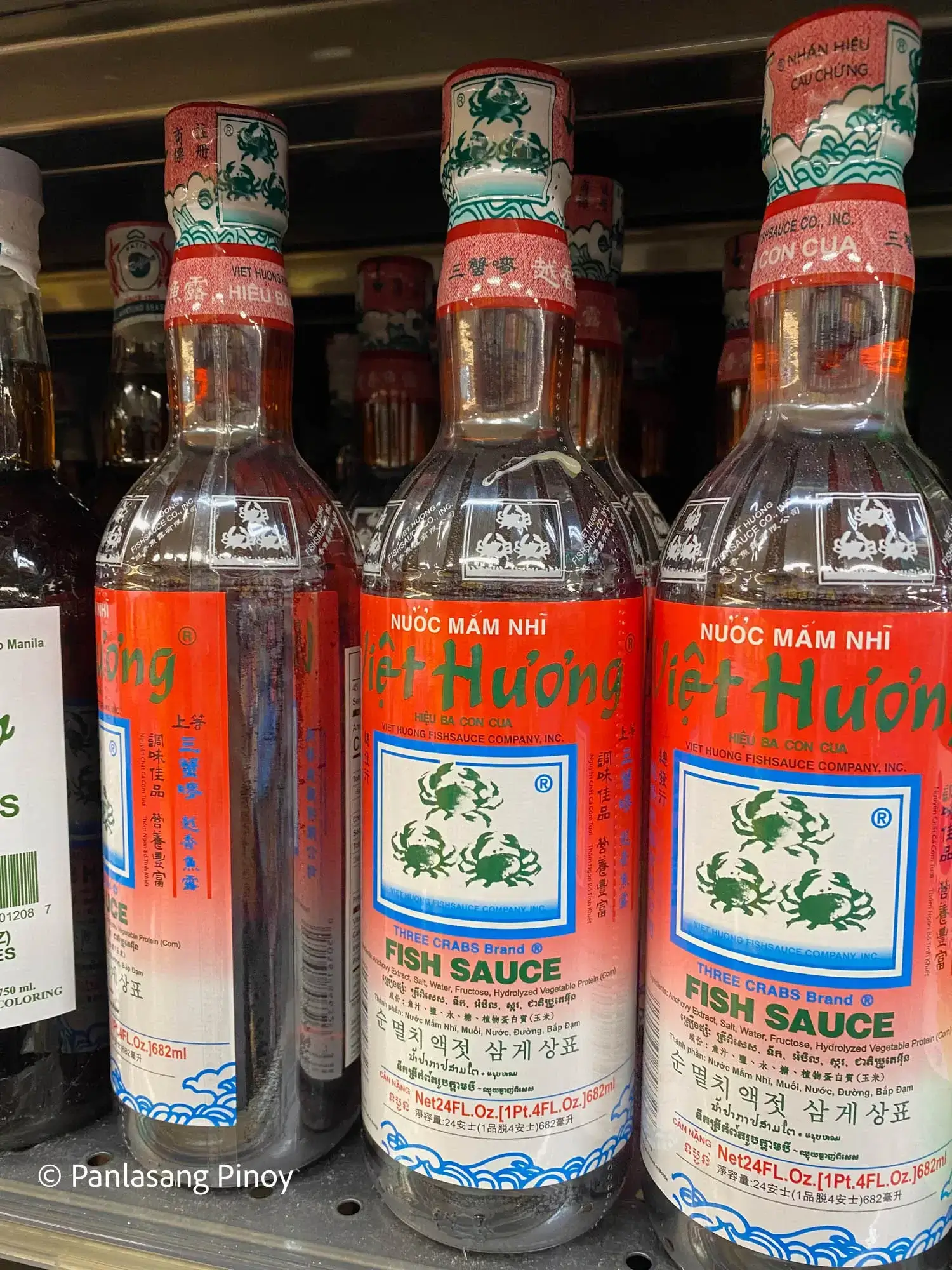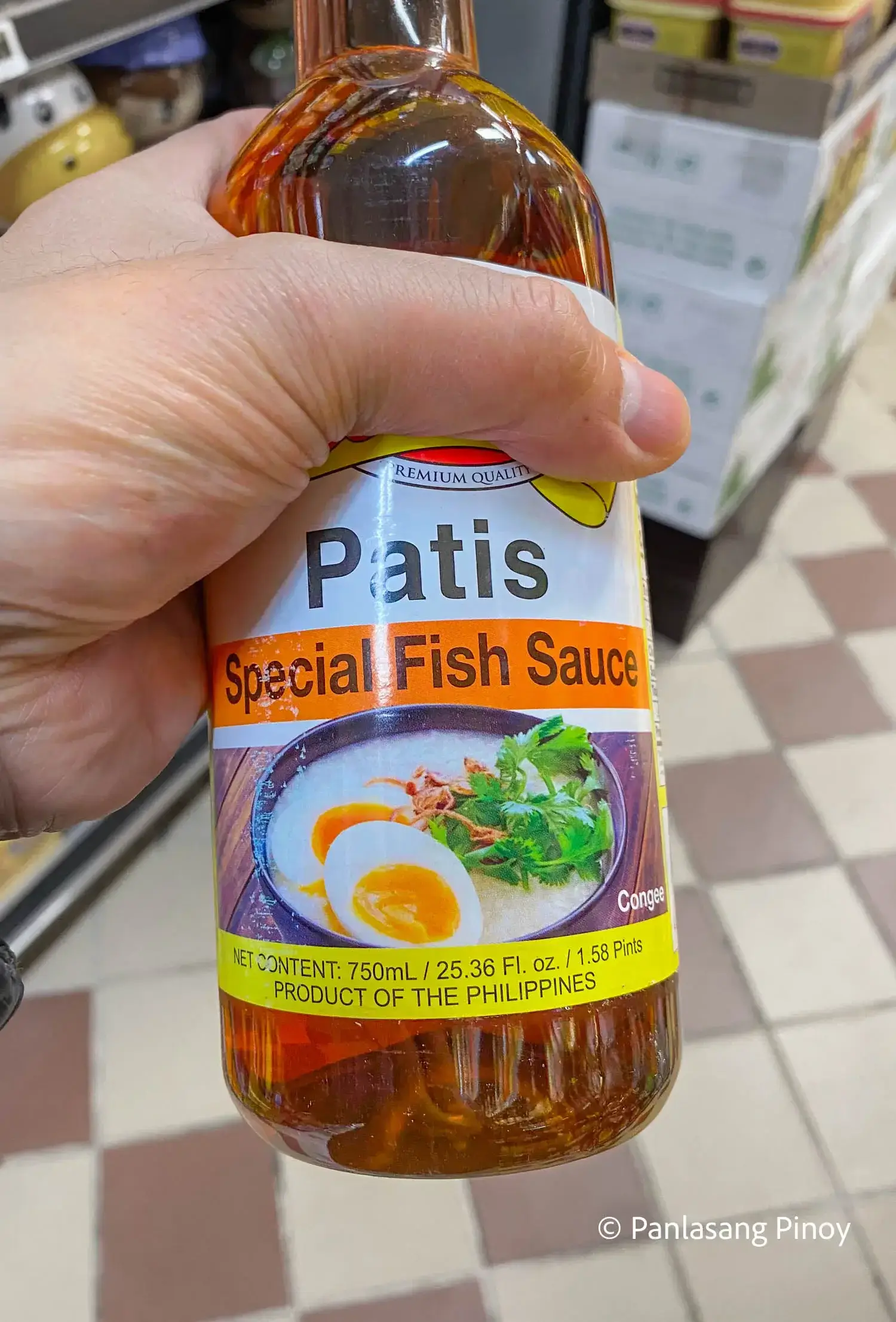Fish sauce is a complex flavor common to most Southeast Asian cuisines. Here in the Philippines, fish sauce –– or Pettis, as we call it — is often used to enhance the flavor or soups and stews. Not only does it work as a good marinade, but it’s also a dipping sauce that people use for some meats and seafood. Its taste is partly sweet, partly salty, partly UmamiAnd everything is delicious.
Depending on which country you are from, fish sauce comes in many different names.
- In the Philippines we know the fish sauce Pettis.
- But people in Thailand or Laos know it A wonder.
- Cambodians call it sauce fresh talk,
- And Vietnamese people call it nuoc mam.
- In Indonesia, it is ketjap ikan …
- And if you’re in Burma, you’d look for something called Unnamed: ngan bya yay.
But whatever you call it, the product you get is the same – a delicious and salty sauce for countless meals.
Where does it come from?
Yes, fish sauce may be common in Asian dishes. But did you know that it originated in ancient Greece? Early records from the 4th to 3rd century BC saw the Greeks fermenting a fish called Garros.
Later the Romans made a similar sauce called Garum, made from the guts of fish that they usually waste. By salting fish inside and leaving them to ferment for months, the Romans unknowingly created a sauce that the rest of the world would soon enjoy. One philosopher, Pliny the Elder, even called fish sauce an “excellent liquid.” Fish sauce is not very common in modern Italian cooking, but the sauce is Cultura di Alicci Still popular today. Made with anchovies and salt, it’s almost of Garum the youngest offspring.
Others say, however, that fish sauce, like soy sauce, originated in China. This was when people in the Zhou Dynasty fermented fish with a combination of soybeans and salt. In later dynasties, they took fish out of the equation altogether, giving birth to what we know today as soy sauce. Fish sauce was still produced, but not to the same extent with soy sauce taking hold.
But despite the faltering popularity of fish sauce in China, its use in Southeast Asian countries has begun to rise. Like how Northeast Asian countries began to monopolize the use of soy sauce, countries such as Vietnam, Thailand and Cambodia began to incorporate fish sauce more and more into their cuisine.
what is it Anyway?
If it wasn’t clear enough from the name alone, the main ingredient of fish sauce is – you guessed it – fish. fermented Fish, to be precise; Most of that salty, fishy flavor comes from oily fish like anchovies or anchovies Glongong.
The process of making fish sauce can be quite long precisely because of the fermentation. Some companies have found ways to speed up the fermentation process without sacrificing taste. However, many also still maintain the traditional way of making the spice – by taking time.

This is why there are different “grades” or “grades” of fish sauce on the market. Better quality Pettis Prepared from small fish such as anchovies and small shrimp. For some Filipino manufacturers, Pettis is actually an offshoot or product of another popular spice — Bagong. Best Pettis There is the clearest liquid, with an almost golden color.
It takes about 9 to 12 months for your sauce to finally reach its full and best flavor. Sometimes the jars where the fish are kept are left outside to soak up the sunlight. The warm sunlight also helps give the fish sauce the darker color and smell that you can detect anywhere.
It is the combination of fermented fish and sunlight that gives this classic spicy smell to this type of sauce. A lot of people tend to shy away from fish sauce for this very reason. But like many things in life, the greater the risk the shorter the reward. If you look at the distinct smell of the fish sauce, you have an absolutely delicious addition to your kitchen pantry and dining table.
You can learn more about how to make fish sauce in this article.
How is it different from soy sauce, oyster sauce and Worcestershire sauce?
soy sauce
As mentioned earlier, soy sauce has become the more popular condiment in Northeast Asian countries. Made with fermented soybeans and wheat, many use soy sauce (or Toyo) as a vegan substitute for Pettis. Both let’s name it Umami A taste that can be found in many different meals.
Since soy sauce does not have fermented fish as an ingredient, it lacks the strong smell we usually associate with it Pettis. It is also much darker in color, with a fish sauce that is more like apple juice.
Oyster sauce
Arguably, fish sauce is more like oyster sauce than soy sauce. Clam sauce definitely matches the quintessence Umami taste Pettis brings a little more than Toyo tin. However, it still can’t match the distinct aroma fish sauce can provide.
Another of their biggest differences lies in their consistency. Oyster sauce is thicker, and will not be good for dishes that rely on Pettis’ Thin consistency. It also tastes better than fish sauce, which is mostly salty.
Worcestershire sauce
Popular in England, Worcestershire sauce is often a viable substitute for fish sauce. The sauce is made from several ingredients, including but not limited to anchovies, molasses, tamarind and vinegar. Like fish sauce, it is also fermented for a long time, providing that Umami taste.
Still, the sodium content of Worcestershire sauce remains much lower than that of fish sauce. Because of its abundance of ingredients, the flavor profile of Worcestershire sauce may end up being quite different.
Is there a vegan version?
Some stores and brands offer vegetarian and vegan friendly alternatives to fish sauce. One common ingredient in these alternatives would be mushrooms or dulse. Dulce is a type of seaweed that can also pass as a snack. When mixed together with sea salt and TamariYou get the same thing Umami Fish sauce has flavor — without the fish!
If you can’t find any vegan fish sauce at your local market, there are some recipes online that are quick and easy. You’ll have your own vegan fish sauce at home in no time!
What can you cook with it?
Brands like Barrio Fiesta and Marca Pina help bring the Pettis experience for your household. We often use a combination of fish sauce and calamansi to add a tastier bite to our dishes. If you want that extra spice, add Seeley (or chili pepper) will also do the trick.
But we are so used to seeing fish sauce as a dip that we often forget that it can be used in other ways as well. Fish sauce isn’t just valuable after you’ve served food; You can also use it during the cooking process! In the Philippines, the word Pinatisan Refers to the process of cooking the meat Pettis and other ingredients. These other ingredients are usually garlic, ginger, onion, pepper and bay leaves. It is similar to binagoonganwhich refers to mixing ingredients in shrimp paste.
Dishes like fried chicken and pork can be cooked with fish sauce for this special Umami taste. You can even give the classic adobo A twist by cooking it in fish sauce instead of the usual soy sauce marinade.
Fish sauce also works well in savory fried rice dishes, curries and––surprisingly––egg dishes! When cooking soups and certain dishes, fish sauce serves as an excellent substitute for salt. Its familiar taste adds another layer of complexity to the taste of many dishes, such as Sinigang and tinola.

Is fish sauce healthy?
Fish sauce has its own nutritional benefits apart from being a delicious condiment. As mentioned, fish sauce can be a substitute for salt in dishes – and also healthier.
A study by the Journal of Food Science showed that using fish sauce reduced sodium chloride levels by up to 25%. Even with these levels reduced, you still get this larva, Umami taste what Pettis. Despite its salty taste and sodium content, fish sauce helped lower high blood pressure. This is because its enzymes are similar to ACE inhibitor drugs, which help lower blood pressure and relax the veins. Its enzymes also aid in the production of insulin, making it beneficial for diabetics.
Including fish sauce in your diet also means a good source of protein and calcium. The fermentation process helps in the production of enzymes in fish sauce that improve our immune system. Diseases such as arthritis and others related to inflammation can also be soothed Pettis.
Still, when consumed in high quantities, fish sauce can prove harmful to your health. Although it reduces sodium chloride levels, Pettis Still comes with a high salt content. One tablespoon of fish sauce is enough for the recommended salt intake for the whole day.
When eaten in large quantities, what was initially beneficial and tasty can become harmful… so be sure to consume your fish sauce wisely!

Fish sauce is an important part not only of Filipino cuisines, but of Southeast Asian cuisines as a whole. Its smell may be off-putting at first, but it would be unwise to wipe it off so quickly. With its vast repertoire of dishes, it is one of the tastiest and most versatile spices you can find. No matter what you call it in your native language, Pettis It is the perfect companion in any kitchen.
Tell us what you like to eat with yours Pettis!

![Teriyaki Pina Colada Burger [+ Video]](https://ohsweetbasil.com/wp-content/uploads/teriyaki-burger-with-grilled-pineapple-pina-colada-mayo-recipe-4-scaled.jpg)

